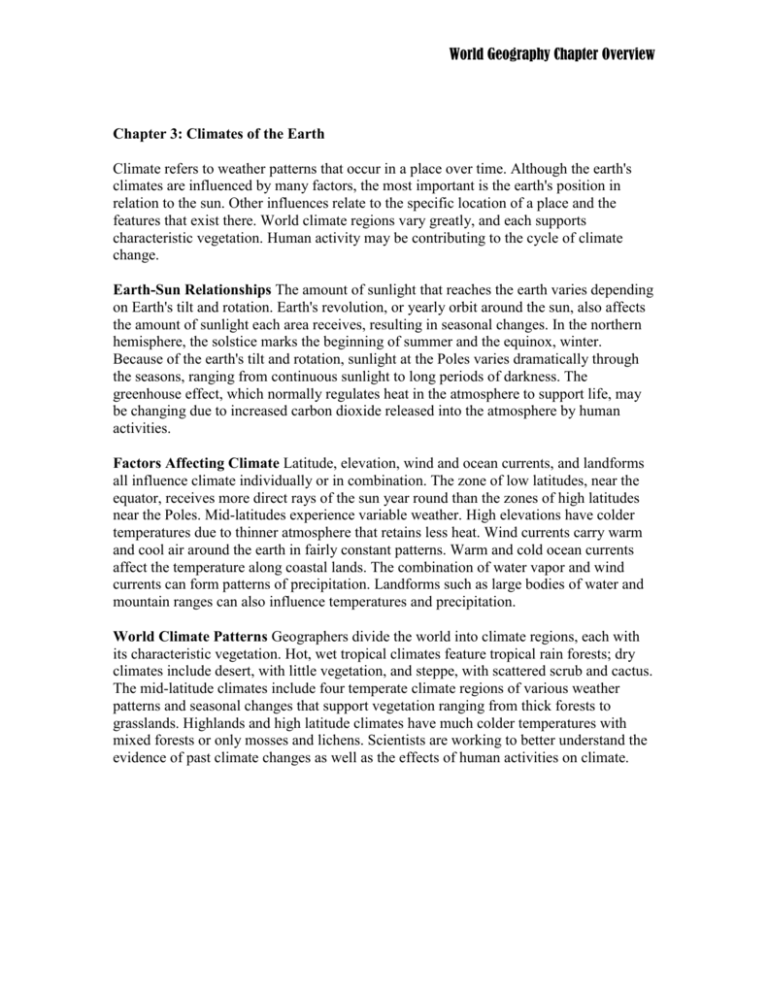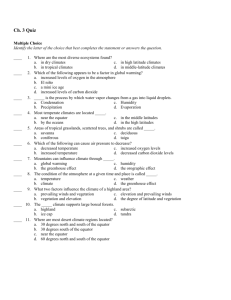Chapter 1: How Geographers Look at the World
advertisement

World Geography Chapter Overview Chapter 3: Climates of the Earth Climate refers to weather patterns that occur in a place over time. Although the earth's climates are influenced by many factors, the most important is the earth's position in relation to the sun. Other influences relate to the specific location of a place and the features that exist there. World climate regions vary greatly, and each supports characteristic vegetation. Human activity may be contributing to the cycle of climate change. Earth-Sun Relationships The amount of sunlight that reaches the earth varies depending on Earth's tilt and rotation. Earth's revolution, or yearly orbit around the sun, also affects the amount of sunlight each area receives, resulting in seasonal changes. In the northern hemisphere, the solstice marks the beginning of summer and the equinox, winter. Because of the earth's tilt and rotation, sunlight at the Poles varies dramatically through the seasons, ranging from continuous sunlight to long periods of darkness. The greenhouse effect, which normally regulates heat in the atmosphere to support life, may be changing due to increased carbon dioxide released into the atmosphere by human activities. Factors Affecting Climate Latitude, elevation, wind and ocean currents, and landforms all influence climate individually or in combination. The zone of low latitudes, near the equator, receives more direct rays of the sun year round than the zones of high latitudes near the Poles. Mid-latitudes experience variable weather. High elevations have colder temperatures due to thinner atmosphere that retains less heat. Wind currents carry warm and cool air around the earth in fairly constant patterns. Warm and cold ocean currents affect the temperature along coastal lands. The combination of water vapor and wind currents can form patterns of precipitation. Landforms such as large bodies of water and mountain ranges can also influence temperatures and precipitation. World Climate Patterns Geographers divide the world into climate regions, each with its characteristic vegetation. Hot, wet tropical climates feature tropical rain forests; dry climates include desert, with little vegetation, and steppe, with scattered scrub and cactus. The mid-latitude climates include four temperate climate regions of various weather patterns and seasonal changes that support vegetation ranging from thick forests to grasslands. Highlands and high latitude climates have much colder temperatures with mixed forests or only mosses and lichens. Scientists are working to better understand the evidence of past climate changes as well as the effects of human activities on climate.











